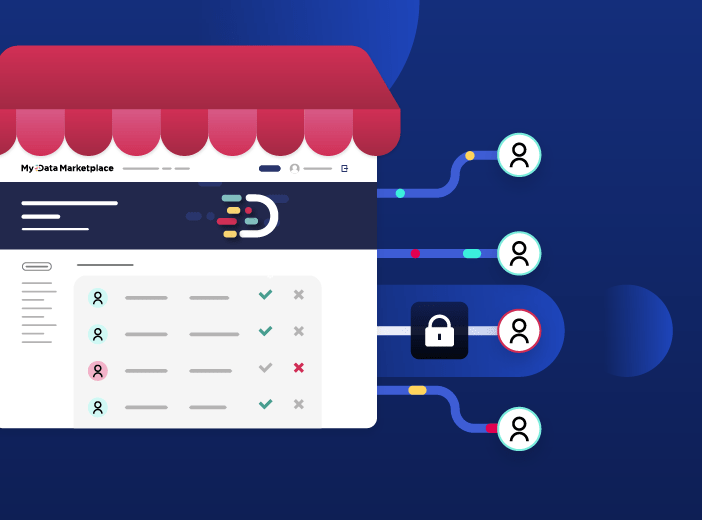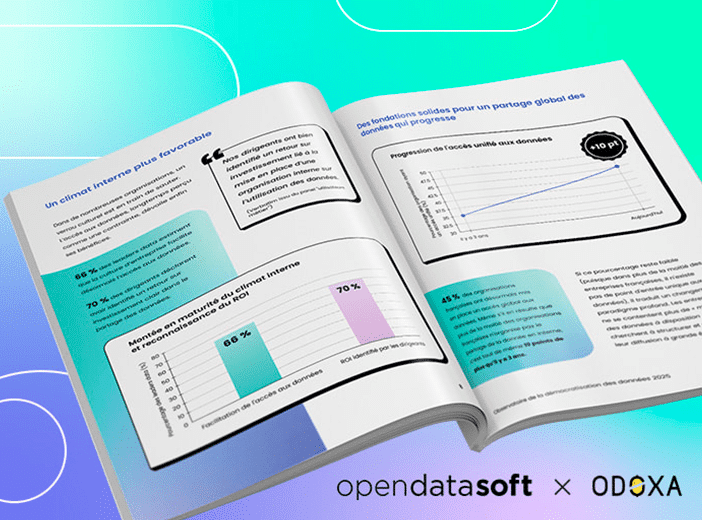How to convince your boss to back your data project

While data use and sharing is growing, it doesn’t mean that your data project will automatically get the senior management backing it needs to be successful. What are the challenges to having your project signed-off and how can they be overcome?
Increasing the sharing of data inside and outside organizations unlocks huge benefits. It enables companies to become more data-driven, efficient, innovative, collaborative and transparent. However, in the current economic situation, getting concrete financial backing for your data project isn’t going to happen automatically. What are the challenges to getting funding – and how can you overcome them?
Why data is essential to business success
Senior managers increasingly understand the importance of data to organizational success, whatever sector you operate in. 92% of companies surveyed by New Vantage Partners said they were achieving returns on their data and AI investments, while McKinsey believes that by 2025 most companies will be using data to optimize their operations and empower better decision-making.
Analysis by Accenture found that data-driven companies are growing at an average of over 30% annually, by putting data at the heart of everything they do, and enabling better decision-making, new business models and new partnerships. Achieving this requires senior leaders to invest in creating a clear strategy and building an enterprise-wide data platform, data governance and management processes.
The challenges to getting your data project signed-off
While there’s widespread acceptance of the power of data, three key issues may prevent managers from signing off investments in data projects within your organization.
Feeling data doesn’t help achieve organizational objectives
We’ve all seen the case studies on how digital native companies such as Amazon, Tesla, and Spotify have built billion dollar businesses based on using data effectively. However, senior managers in existing public and private sector organizations may feel that their needs, resources and objectives are very different to these success stories. Essentially, managers can believe that widening data use is not applicable, possible, or even necessary in their organization.
Worries about excessive hype in the market
There’s a lot of activity in the field of data, with a constant stream of announcements around new technologies and terms, from Big Data to Artificial Intelligence (AI) and machine learning. Often these are described in very technical ways that are difficult for business people to understand or see the real value in. From the outside this means that it can seem that “data” is the latest bandwagon, which makes cautious managers worry that there’s no substance behind the buzzwords and no benefit to getting involved.
Concerns about knowing where to start the process
Data, digitization and AI have the potential to transform organizations. However, achieving this transformation is a large-scale project that requires a long-term commitment of resources and time. It can be very difficult for managers to understand where they should begin in order to successfully begin their journey to become data-driven.
5 ways to overcome challenges to backing your data project
All of these challenges are perfectly valid and you’ll therefore need strong arguments to overcome them. Start with these five approaches and use them to build your business case to convince senior management.
1. Make it real
Cut through the hype and demonstrate how your data project will deliver tangible benefits within the organization and with your stakeholders. Find real-world examples of similar projects in organizations within your sector and use these as part of your business case. This will make the results tangible and overcome concerns that data is irrelevant to your company objectives. If you can, then show how rivals are using data to gain competitive advantage, exploiting any fear of missing out that your managers might have.
UK Power Networks, the UK’s largest electricity distribution network and system operator, knew that it needed to transform to meet the challenges of decarbonization, greater efficiency and increased collaboration across its ecosystem. The business case for its open data portal was therefore built around meeting these objectives, showing how it delivers value as part of a wider strategy.
2. Use accessible language
There’s a baffling array of terms used within data and AI. Therefore, make sure your presentation and proposal move away from jargon to demystify what you are looking to do. Use business terms that your audience understands and can relate to, rather than hoping to blindside them with technical terms. That means talking about the direct benefits to the organization, whether it is in efficiency, better decision-making, greater transparency or meeting regulatory goals.
3. Listen and understand people’s motivations
Often, data projects will be signed off by more than one person, so you need to convince a range of people about the benefits your project will bring. Spend time to get to know them and their motivations and pain points. What are the likely objections that they may have? What are the business problems they are grappling with on a day-to-day basis? This may well be different between different stakeholders – for example, the goals of the sales team will vary from that of finance or operations.
If you work in IT, talk to wider teams and get their buy-in by explaining how data can effectively solve their challenges. By creating a wide base of support for your project you’ll not only be more likely to secure funding, but you’ll have engaged potential users down the line, maximizing the chances of success.
For example, while it was developing its new open data portal, the North Carolina Office of State Budget and Management (OSBM) ran roadshows with potential users. These included state employees and decision makers, staff at local municipalities, data scientists, researchers and citizens. This meant that when the project went live it was a close fit for all of their diverse needs in terms of both the data it contained and its overall usability.
4. Start small with your data project
As we’ve said, data has the power to transform an organization. However, senior managers are likely to be concerned about the cost, time and other resources required for a large-scale transformation. So start small, beginning with tangible projects that will show specific business benefits while putting in place the foundations for the future. For example, don’t try and capture and document every dataset in the company from day one, but pick those that will drive real, immediate value. Once initial projects are shown to be successful it will increase momentum behind the whole idea of increasing data use.
Having a roadmap in place, with set milestones, will reassure managers that they are not making an open-ended commitment that may not deliver short-term results and that cannot be changed once it has been launched.
Schneider Electric provides energy and digital automation solutions for efficiency and sustainability. It knew it needed to become more data-driven, both internally and externally. However, rather than launching solutions for both audiences simultaneously, it began with its internal Data Library project, aimed at its 130,000 employees, providing them with data through a self-service portal. Once this had demonstrated results it used its experience to create Exchange – a marketplace of data services aimed at external partners. Taking this two-stage approach ensured buy-in and also meant it learnt as the overall project progressed.
5. Show a clear Return on Investment using the right metrics
The whole point of data is that it is tangible, so make sure that your business case is equally robust and founded on solid information. If you can provide a mock-up of what the project will actually deliver, whether that is a dashboard, self-service portal or a workflow where data is used to increase performance.
Spend the time to build your business case based on:
- Identifying the resources you need for your program and the costs involved. Be realistic and include people, technology and any other resources you will require.
- Any savings that your project will create – for example, will it reduce compliance costs or save time as previously manual processes are automated? Check your numbers with those involved, particularly finance, to ensure that they are acceptable and expressed in the right terms.
- Select and agree metrics for how the program will be judged and tie these into wider, agreed business objectives. Put a monetary value on these if possible – for example, how much will you save if you automate the provision of data via self-service, rather than relying on specialist data analysts to create dashboards?
- Create a realistic timeframe for the project, breaking it into specific phases that are easy to understand and measure.
While there’s a growing realization of the importance of data in every industry, turning this into backing for tangible products is not automatic. That’s why you need to build a solid business case and take a listening approach if you are to get the right backing for your data project.

It can be hard to understand exactly what a data product is, given the many ways that the term is defined and applied. To provide clarity this article provides a business-focused definition of a data product, centered on how it makes data accessible and usable by the wider organization, while creating long-term business value.


